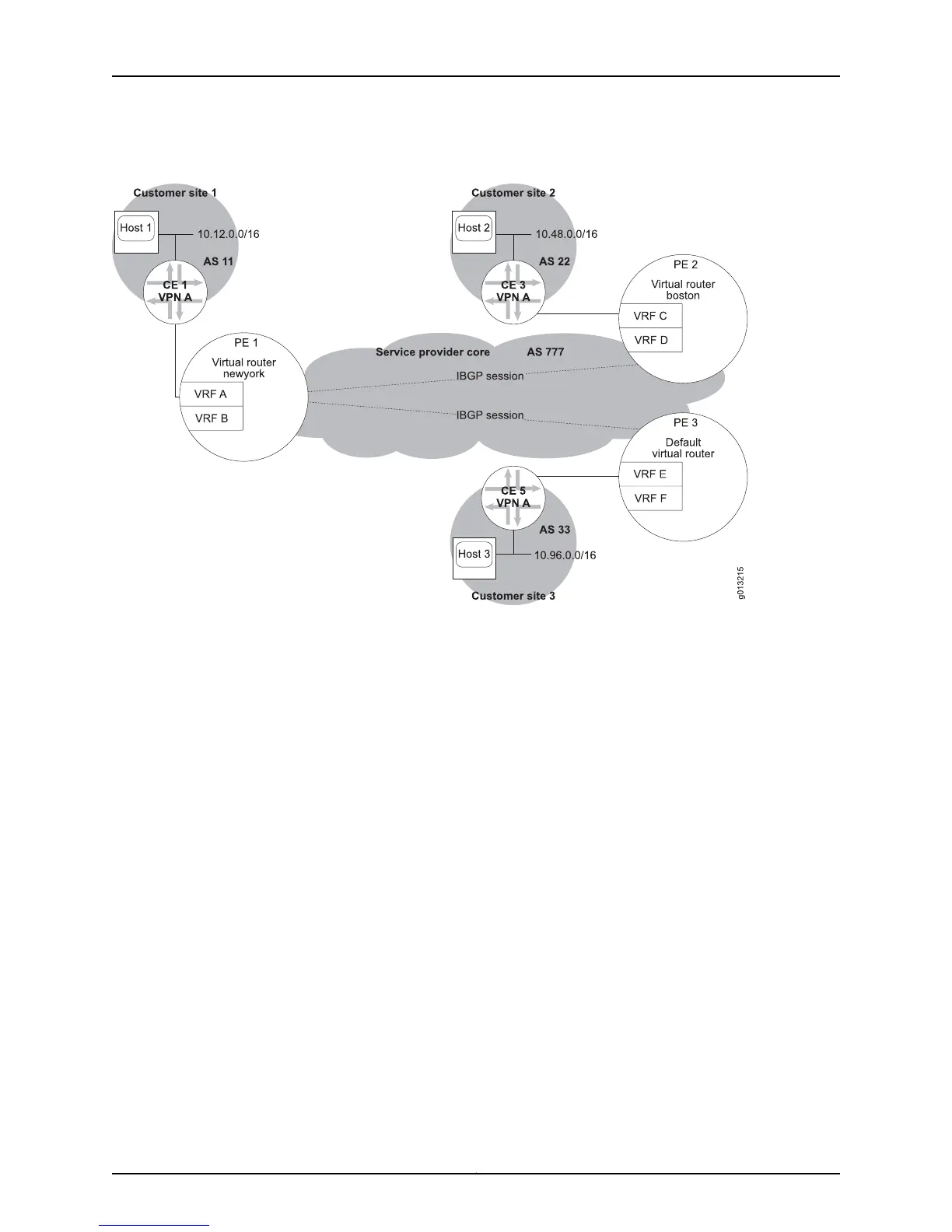Figure 90: Hub-and-Spoke VPN
Route-target configuration on PE 2:
host2(config)#virtual-router boston
host2:boston(config)#ip vrf vrfC
host2:boston(config-vrf)#route-target export 777:50
host2:boston(config-vrf)#route-target import 777:25
Route-target configuration on PE 3:
host3(config)#ip vrf vrfE
host3(config-vrf)#route-target export 777:50
host3(config-vrf)#route-target import 777:25
This configuration ensures that when VRF E on PE 3 receives an update message from
PE 1, BGP installs the advertised route only if it has a route target of 25. Routes from PE
2 have a route target of 50, and cannot be installed. Similarly, when VRF C on PE 2 receives
an update message from PE 1, BGP installs the advertised route only if it has a route
target of 25. Routes from PE 3 have a route target of 50, and cannot be installed. When
PE 1 receives updates from either PE 2 or PE 3, the routes have a route target of 50, match
VRF A’s import list, and are installed in VRF A’s forwarding table.
Setting Import and Export Maps for a VRF
The combination of the route-target export list of VRF A and the route-target import list
of VRF B determines whether routes from VRF A are distributed to VRF B. You can provide
finer-grained control of route distribution by associating any combination of export,
import, global export, and global import maps with VRFs. As shown in Figure 91 on page 429,
a route is distributed (leaked) between RIBs and its attributes are changed as specified
Copyright © 2010, Juniper Networks, Inc.428
JunosE 11.2.x BGP and MPLS Configuration Guide

